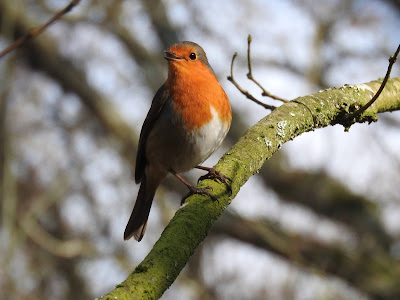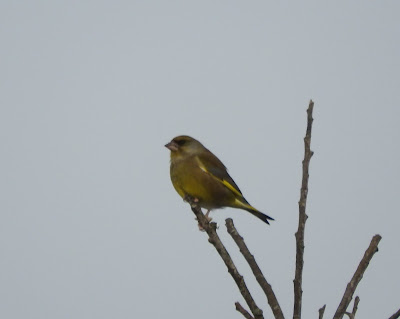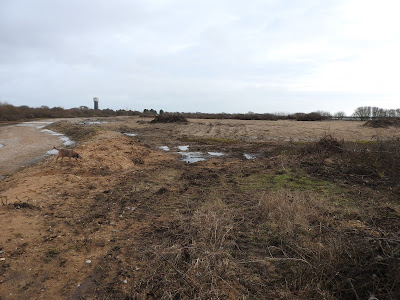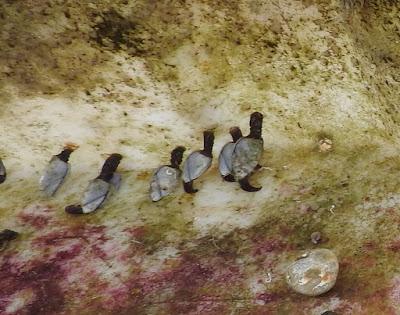Lade - cool, sunny, E 3 - This weekend the weather changed subtly with cooler air wafting in from the east as a high pressure system built, making it feel warm in the sun and chilly in the shade. As a result my attempts at moth trapping (nil return) in the garden trap have been shelved. Chiffchaffs continue to be in good voice around the willow swamp with two singers yesterday and five Goldeneyes remain on the lakes, while displaying Skylark, Meadow Pipit and Stonechat were all on show around the Kerton Road quarry. An afternoon wader count on the bay recorded the following: Oystercatcher 723, Curlew 326, Sanderling 125, Dunlin 24, Barwit 18, Grey Plover 21, Ringed Plover 15, Knot 13 (still low numbers of sandpipers). A Friday evening walk onto the desert shingle produced not only a magnificent sunset but also the distant spectacle of thousands of swirling Starlings in pre-roost murmurations over the bird reserve.
Mipit and Stonechat back on territory
Cackling Starling on cottage roof
This morning we decided on an early start and a short drive to our nearest woodland for our daily exercise walk. While our fragmented woods here in England are a pale shadow of the wildwood of yesteryear I still have a primeval urge to wander amongst trees imagining what it must have been like before our Neolithic ancestors set about them with the axe and plough. The weather was perfect and it was a treat to potter about under the oak, ash and hornbeam canopy along with a sprinkling of gean and beech and an under storey of hazel, birch, blackthorn and hawthorn. Here and there patches of wild arum, wood violets and primrose rose from the bare earth to greet the sun, and without any leaf cover we soon clocked up all the expected resident bird species including `drumming` Great spots, Nuthatch and Treecreeper. Less than a generation ago Lesser Spotted Woodpecker, Willow and Marsh Tits, Hawfinch, Redpoll and Tree Sparrow may well have been on the cards, but not any more; just what has happened to species diversity in our woodlands? Almost as depressing was the drive home across Walland where it was noticeable that many more corners of the Marsh have been `tidied up` this winter, including the rough ground around Midley drying barns. There was no sign of the wild swans on the Midley fields (I presume they`ve departed) or any winter thrushes; infact it was pretty much devoid of any wildlife of any kind.
Another grubbed-up hedgerow on WallandPrimrose and Robin



















































